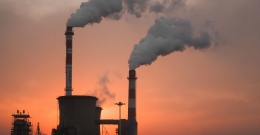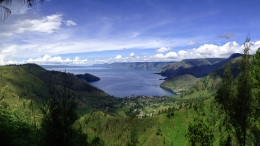Climate change affects the whole world, not only humans but also the environment. Climate change in the Arctic, caused by global warming, has caused what scientists call “The Big Thaw.” The melting of polar ice caps causes the rising of sea levels, which can flood/drown low areas, areas below sea level and areas near the sea. Furthermore, climate change can also destroy a lot of habitats due to forest fires, droughts, and rising sea levels. Additionally, climate change can affect permafrost. Why is permafrost important? According to O. Roger Anderson (2018) a biologist at the Earth Institute’s Lamont-Doherty Earth Observatory, “the ‘active layer’ of soil on top of the permafrost, which may be two to 13 feet deep, thaws each summer and can sustain plant life. This layer releases carbon from the roots of plants that respire, releasing CO2, and form microbes in the soil.” The thawing of permafrost would release Carbon dioxide, which would increase global temperature.
Limited Supply
Not only pollution, but another reason for the necessity of a change in energy supply is its limited quantity.
Like everything in the world that is nonrenewable and has a limited quantity, fossil fuels and petroleum are bound to deplete over time. As we enter the age of technology, electricity has been an essential part of our lives. Without electricity, almost everything would turn to chaos. This dependence on electricity was seen during the massive Californian power outage on October 9 and 10, 2019. As written and reported by Jill Cowan (2019), the massive power outage caused chaos in labs all around the state, and universities such as U.C. Berkeley and Humboldt State University were forced to close campus and cancel classes.
This chaos shows our significant dependence on electricity. If one day the earth loses its entire fossil fuel and petroleum supply, our society would be doomed. However, this problem wouldn’t be as serious if we were to change to depending on renewable energy.
In an interview with Mr. Budi Basuki, former President Director and current COO of Power & Mining for Medco Energi, he stated “Indonesia has already imported around half of the supply of diesel fuel. Out of around 1.6 million, 600 thousand of the diesel fuel is imported.” If the government of Indonesia is already importing diesel fuel, this means that Indonesia is already experiencing a shortage of fossil fuels. This is more proof that renewable energy needs to be the main source of electricity.
In the interview, Mr. Basuki further stated that the government of Indonesia is currently having problems with the state budget (APBN). As stated above, Indonesia imported around half of the supply of diesel fuel. He stated that Indonesia used around 28 billion IDR for importing petroleum. This puts the government of Indonesia in a pinch because they are out of money. Instead of importing materials that are needed for projects such as infrastructure, agriculture, and technology for renewable energy. Furthermore, in the interview, Mr. Basuki also stated that the distribution of petroleum is expensive. In Indonesia, it is very costly to distribute to Papua. The island of Papua is one of the least developed areas in Indonesia. Because of the price, it’s quite hard to develop the area. Henceforth, the need to change to renewable energy is greater than ever.
Obstacles for Change
Changing the main source of energy takes a long time. Unlike Indonesia, Mr. Budi Basuki stated that green energy, such as solar power, in some developed countries is much cheaper than petroleum. He also mentioned that previously “around 30% of Indonesia’s GDP came from petroleum. However, the number has decreased as the years passed.” In an interview with Muhamad Reza, PhD, power system expert and electrical engineering lecturer at Telkom University, stated that “it may take five to ten years to adapt to the change from fossil fuels to renewable energy.” This statement is further supported by Mr. Budi Basuki in his interview. He said that, since Indonesia is still a developing country, it would still be hard to develop the technology needed. Why? Because the process and construction of said technology is expensive and time-consuming. Henceforth, Indonesia would still need to use cheap and easy petroleum or fossil fuels to develop the country.
IESR (2019) reported that “RUPTL (Rencana Usaha Penyediaan Tenaga Listrik) low-cap reference case comes at the lowest overall cost of US$135.4 billion over the ten-year period. Medium RE (Renewable Energy) scenario is 4% higher, and High RE 7% higher; in the Energy Transition scenario, with lower WACC (Weighted average cost of capital) at 8% and a steeper learning curve for solar and wind, system cost goes down to $134.2 billion, lower than in the RUPTL reference case.” This is the predicted total costs of the transitions through 4 different scenarios. This prediction has been run through many scenarios. As stated above, a transition from petroleum to renewable energy sources would not be cheap and it would take more than or around ten years.
Economical Benefits













